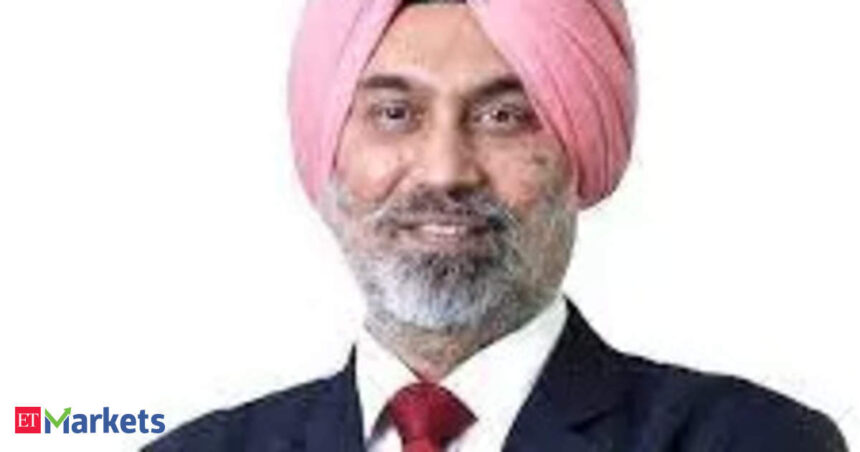Now, you managed to post a growth of 26% on a year-on-year basis in Q1, which is traditionally a weak quarter. Given the fact that we have got the upcoming festive season, the kind of traction that we are expecting, do you think that a 25% plus growth target that has been outlined is a bit conservative? Would you revisit that?
So, we gave guidance at the early start of the year. For us, the idea was that we could post a growth of about 25%. But, this is 25% plus. Our viewpoint is that since the first quarter went out very well, we expect that we will technically outgrow the guidance which we have given. But, to be very conservative and to be very safe, we have given a 25% plus growth target for this year.
But where is this growth coming from? Is it a specific geography which is doing well for you or is it a specific vertical in terms of, let us say, rural or SMEs or something which is doing exceptionally well?
So, we are predominantly rural. If you look at the complete AUM, this consists of about 80% which is rural. So, the rural economy is doing well with probably normal rainfall and normal monsoon being there. The Kharif sowing crops and everything probably boarding well in terms of the demand for consumption as well as for productivity growth which is there and the income levels have probably been stable. In fact, they are slightly rising in the rural space, that is one.
And the other factor is that for us, in terms of microfinance, the kind of penetration still in the states where we operate is still pretty low, so that actually gives us a pent-up demand in terms of increasing our footprints in these geographies wherever we are present. So, these are two factors which will contribute towards this kind of growth.
So, rural as well as increased penetration, these are the two levers, but does it mean that going forward your quarterly disbursement rate could be higher than Rs 2000 crores?
It could possibly be, that is what I said. First quarter being a weak quarter, the third and the fourth quarter is always a very-very strong quarter. We hope that we will be able to beat the guidance which we have given.
Give us a sense as well going down the line as to what the outlook is when it comes to your ROA on an annualised basis because that came in above the stated guidance of about 3.4% to 4%. Your cost to income ratio as well has improved. Given that you are focussing on improving your operational efficiency, what is the outlook?
So, we have given an outlook technically based on the average which was there for this year of about 3.66% and we have given, again, a guidance of 3.5%, but definitely looking at the way we are able to surpass our growth figures, I think we will be able to surpass our ROA figures also.
Having said that, the reason why we feel that we are pretty confident in pent-up demand, because of the asset quality being much better than what we really expected and possibly also the fact that whatever had happened during the pandemic, I think that is all over now.
We made all write-offs and provisions and we have nothing more to practically look at in terms of stability and once all these factors start kicking in, our cost-to-income ratios, as well as ROAs, everything will have a positive impact in terms of whatever guidance we have given.
I just wanted to highlight that specific issue since you are talking about write-offs and collections and all of that. Could you provide us a status update on the Assam historical collections that you were about to receive from the government because we understand they have been a bit delayed and you were expecting the first tranche. Has it happened?
See, the data has already been given to the state government. In fact, the state government has also cleared up that data along with us along with the self-regulatory organisation MFIN with us. We were expecting that this first tranche would probably come in. We are very hopeful and there are signs which are coming in from the state government that this will happen pretty soon. My guess is that looking at it we feel that in the next week or so, we will get the first tranche which is going to probably come in as possibly a boost to our bottom line and to get the money back from the state government.
So, we are very-very hopeful within this week or maybe another 10 days we will be able to get the money, first tranche money coming in.
What will be the quantum of that first tranche?
I am not very clear about the figure, but this will be close to, I think, 10 to 15 crores which will come in the first tranche.
I just want to understand one simple assessment of how you see the unsecured space moving up. We are looking at stress in the rural economy. Two-wheeler sales are not there. Erratic monsoons are there. Inflation is coming higher. Yet every NBFC and bank is looking at increasing the MFI loans or perhaps their unsecured book. Is not that too risky looking at the backdrop of the economy where the recovery has been K-shaped?
Yes, we will have to look at possibly a few factors which define microfinance. So, microfinance is an unsecured loan, but definitely the way this is operated, it is a joint liability. It is a group model. So, there is a difference between an individual lending model and a group model. In a group model, definitely yes, you are looking at peer collateral in terms of the businesses probably or the borrowers probably standing in for each other to repay any kind of a delay in an instalment and that is one. The second factor which is probably to be looked at, this is income generating loans. This is different from probably an FMCG or maybe a two-wheeler demand which comes up, that is an aspirational value for maybe the rural economy to really look at. Aspirational whatever degree sense you would probably look at. This is income-generating loans. These will actually boost up the income levels of our borrower. Now, these are definitely in demand.
This actually helps the borrower to increase their income or their productive capacity. So, over here, the demand is there. The capacity to repay, it has been erratic, definitely yes but it has not been that we are looking at a drought situation or anything.
I think all the Kharif sowing crops, as well as everything, is probably moving in the right direction. So, our sense is that, yes, definitely stability is there and we are hopeful for our growth as well as the asset quality which is going to come in.








